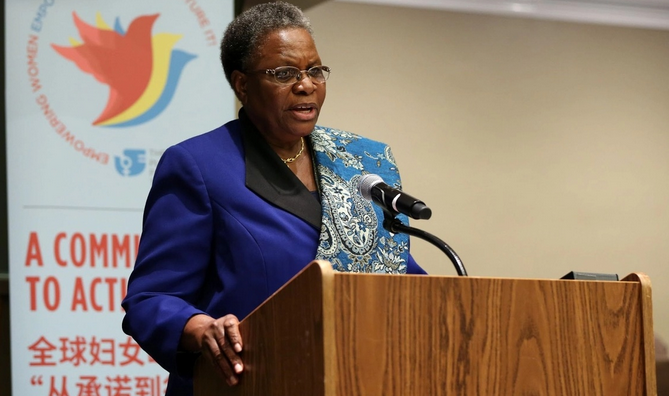Like Nicolae Ceaușescu is dictator Museveni out of touch?
By and large, revolutions in time and space exhibit common characteristics. They have long-term and immediate causes. But sudden and unanticipated changes as in Tunisia in December 2010 trigger the revolutions.
In almost all countries including France, Russia, Mexico, Ethiopia and Tunisia where revolutions have occurred land ownership was skewed in favor of a few people or institutions at the expense of the majority.
Due to space constraints I will focus on France.
At the start of the French Revolution in 1789 land ownership was unequally distributed. The first estate consisting of the clergy numbering some 130,000, the church owned 10 percent of the land and was exempt from paying taxes although it made a voluntary contribution to the state every five years.
The second estate made up of the nobility numbering about 350,000 owned between 25 and 30 percent of the land. The nobility was also exempt from paying taxes.
The third estate was made up of commoners of whom 80 percent were peasants who owned about 40 percent of the land (Jackson J. Spielvogel 1999). The balance of the land went to the middle class also like peasants classified as commoners. The third estate that paid the bulk of taxes was largely excluded from public offices.
What we are witnessing in Uganda is that land is increasingly being concentrated in fewer hands including by foreigners using various means such as the notion of “willing seller and willing buyer” disguised to dispossess powerless and voiceless peasants.
Consequently, Uganda is experiencing rapid landlessness and rural-urban migration and sprawling urban slums with all the attendant challenges.
The second characteristic in countries where revolutions have occurred is economic inequality. It has been shown that 50 years before the revolution, France had experienced rapid economic growth due to accelerated industrial production and international trade. However, the majority of French people did not share in the benefits of that growth.
In Uganda it has been shown that when her economy grew fastest in the mid-1990s, the majority of Ugandans did not benefit and continued to languish in absolute poverty. Former administrator of UNDP James G. Speth observed “Uganda is a leading example of an African country that is doing many of the right economic things to lift people out of poverty. It has posted growth rates averaging over 6% a year for a decade. Yet two-thirds of the population remain in absolute poverty, and per capita income is only now approaching the level it had attained in 1970”(Development Cooperation Seminar Tokyo, 1999).
Inequalities in income distribution, fluctuations in economic activities and rapid population growth are also reflected in unemployment, under-employment and low wages relative to inflation that contribute to revolutions.
Shortly before the French revolution, unemployment rose to dangerous levels where one-third (33%) of adult workers had no jobs in part because France could not compete with English manufactured products. Furthermore, during the 18th century, wages in France rose by 22 percent against a price hike of about 45 percent (Steven Hause & William Maltby 1999; John W. Hall, 2002).
Under-employment, unemployment and low wages have been magnified under the National Resistance Movement (NRM) government in Uganda.
It is estimated that over 80 percent of Uganda youth including university graduates are unemployed. In many cases Uganda wages are below subsistence level, thanks in part to the policy of labor flexibility that allows employers to set the wages, hire and fire at will. Consequently, many workers especially domestic servants are exploited.
The third characteristic that precedes the revolution is that various groups albeit with different backgrounds and interests come together to express their dissatisfaction.
In France four groups converged: the aristocratic group was opposed to tax reform; the middle class (bourgeois) challenged aristocratic control of public offices; peasants opposed the remnants of feudalism; and an urban working class wanted economic and political reforms (Steven Hause and William Maltby 1999).
In Ethiopia, political, economic and social dissatisfaction with the imperial regime brought together taxi drivers, teachers, students, street vendors and labor unions (D. Fogel, 1982).
Ugandans at home and in the Diaspora are being called upon to come together and collectively challenge the NRM regime that has failed to deliver in virtually all areas of human endeavor as desired by the people.
Above all, these grievances are sparked into a revolution by a sudden and unanticipated event. In Tunisia it was Mohamad Bouazizi who set himself on fire in protest against oppression and injustice and died a few days later.
In Ethiopia it was the rejection by the Emperor and the prime minister of the demands presented by the workers union that sparked the strikes demanding the resignation of the prime minister and calling for a people’s government (D. Fogel, 1982).
In France the revolution was sparked when Louis XVI summoned 20,000 soldiers to the meeting of the Estates-General at Versailles that the disgruntled crowds of Paris reacted to (John W. Hall 2002).
Thus, in Uganda the conditions for a revolution exist in abundance.
Ugandans are waiting for a spark to set it off. However, Museveni and his NRM advisers can stop it only if they act quickly to meet the political, economic and social demands.
Eric Kashambuzi is New York-based consultant on development issues.






